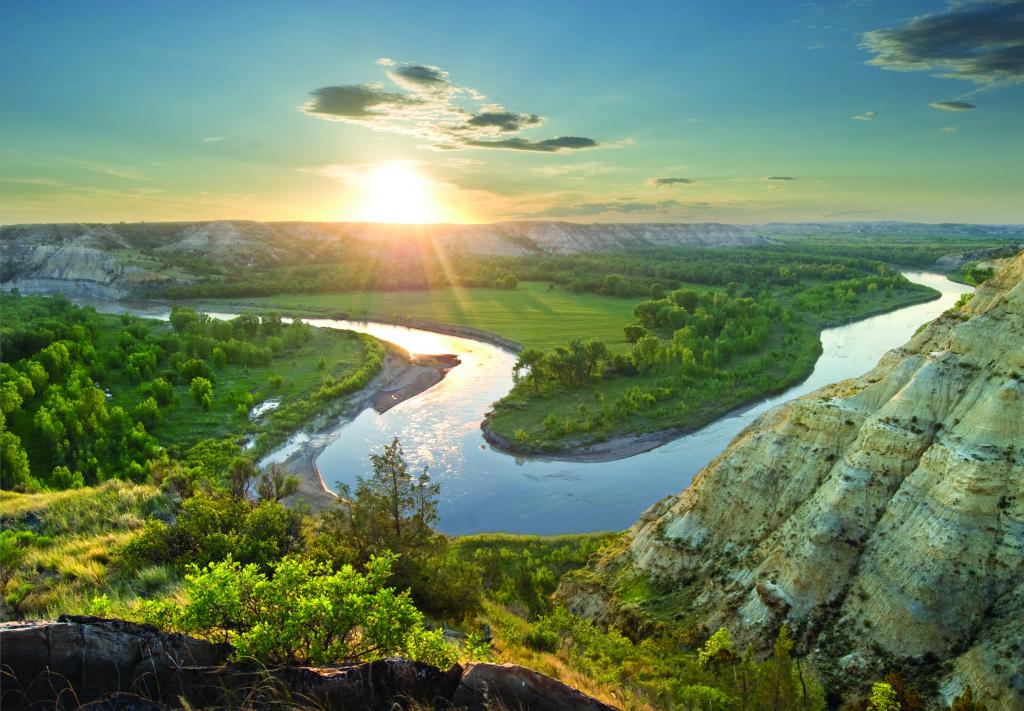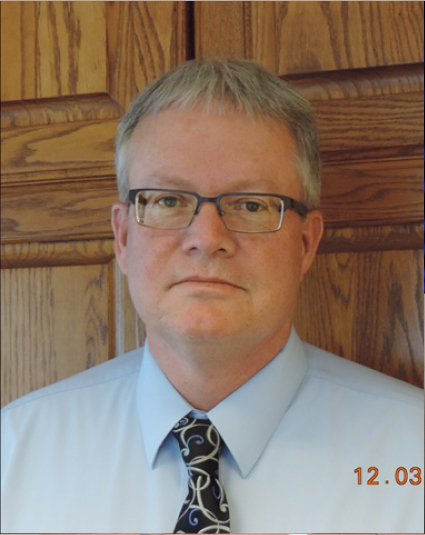Meeting Notice:
Please check back for next meeting date.
The purpose of this chapter shall be to preserve the Little Missouri River as nearly as possible in its present state, which shall mean that the river will be maintained in a free-flowing natural condition, and to establish a Little Missouri River Commission. (Chapter 61-29-02)

Agenda
Please check back.
Meeting Minutes
September 9, 2025 - Meeting Minutes (Draft)
September 10, 2024 - Meeting Minutes
September 12, 2023 - Meeting Minutes
September 13, 2022 - Meeting Minutes
September 7th, 2021 - Meeting Minutes
September 1st, 2020 - Meeting Minutes
September 10th, 2019 - Meeting Minutes
August 6th, 2018 - Meeting Minutes
June 5th, 2018 - Meeting Minutes
October 11th, 2017 - Meeting Minutes
August 29th, 2007 - Meeting Minutes

Paul Taylor
North Dakota Parks & Recreation Department
Paul Taylor is currently serving as the Interim Director of the North Dakota Parks & Recreation Department. Paul has a background in Landscape Architecture from the University of Toronto. He worked for the City of Atlanta in 2005, working primarily on the Atlanta BeltLine project - one of the largest urban redevelopment initiatives in the country. He became Director of Atlanta's Office of Park Design in 2008, with responsibilities for GIS, document management, grants management, capital maintenance, land acquisition, and planning, design, and construction. In 2015, Paul took on a similar role with the City of Baltimore and with the Maryland National Capital Park & Planning Commission (Prince George's County) in 2017.

Pam Hestekin
Bowman County Representative
Pam Hestekin lives on a ranch 23 miles southwest of Rhame, ND. Pam also serves on the Bowman County Ambulance District Board. In her free time, Pam enjoys sending time with her family and grandchildren. She enjoys specialty baking; crocheting; gardening; and taking pictures of family, wildlife and our beautiful North Dakota.

L. David Glatt
North Dakota Department of Health
L. David Glatt joined the North Dakota Department of Health in 1983 as an environmental engineer. In 1989, he became manager of the Ground Water Protection Program and was named as assistant director for the Division of Water Quality shortly thereafter. In May 2000, David was named director of the Division of Waste Management, and in 2002, he was named section chief of the Environmental Health Section. He is a registered professional engineer receiving a BS degree in biology with a MS degree in Environmental Engineering from North Dakota State University, Fargo.
ADDITIONAL MEMBERS:
John Packowski
North Dakota Interim State Engineer
David Lee Crighton
McKenzie County
Patrick Weir
Billings County
John Hanson
Slope County
George Wineries
Golden Valley County
Joe Schettler
Dunn County
CHAPTER 61-29
LITTLE MISSOURI STATE SCENIC RIVER ACT
61-29-01. Short title.
This chapter may be cited as the Little Missouri State Scenic River Act.
61-29-02. Intent.
The purpose of this chapter shall be to preserve the Little Missouri River as nearly as
possible in its present state, which shall mean that the river will be maintained in a free-flowing
natural condition, and to establish a Little Missouri River commission.
61-29-03. Definitions.
For the purposes of this chapter, unless the context otherwise indicates:
1. "Free-flowing" shall mean existing or flowing in a natural condition without
impoundment, diversion, straightening, or other modification of the waterway.
2. "Little Missouri River" means the river commencing at the North Dakota-South Dakota
state border and terminating at its juncture with Lake Sakakawea, with such juncture
defined as the bridge crossing of state highway twenty-two in section thirty-four, range
ninety-five west, township one hundred forty-eight north, with boundaries established
as the natural channels of the river to the low water mark.
61-29-04. Administration.
This chapter must be administered by a Little Missouri River commission composed of the
director of the parks and recreation department, the state health officer of the state department
of health, the chief engineer of the state water commission, or their designated representatives,
and one member from each of the following counties: McKenzie, Billings, Slope, Golden Valley,
Dunn, and Bowman. The commission members representing the above-mentioned counties
must be appointed by their respective boards of county commissioners and shall serve without
compensation except that each appointing board of county commissioners may reimburse its
county representative for actual and necessary mileage to and from meetings of the commission
at the same rate as state officers. The county representatives appointed must be resident
landowners who live adjacent to the Little Missouri River with the exception of the Golden Valley
County representative. A county representative unable to attend a meeting of the commission
may be represented by a person who has a written proxy from the representative authorizing
that person to act and vote for the representative. The proxy must be a resident landowner of
the county that the proxy is representing, but need not live adjacent to the Little Missouri River.
The county members shall serve terms of office as follows: two members shall serve one-year
terms, two members shall serve two-year terms, and two members shall serve three-year terms.
(Contingent effective date - See note) Administration. This chapter must be
administered by a Little Missouri River commission composed of the director of the parks and
recreation department, the director of the department of environmental quality, the chief
engineer of the state water commission, or their designated representatives, and one member
from each of the following counties: McKenzie, Billings, Slope, Golden Valley, Dunn, and
Bowman. The commission members representing the above-mentioned counties must be
appointed by their respective boards of county commissioners and shall serve without
compensation except that each appointing board of county commissioners may reimburse its
county representative for actual and necessary mileage to and from meetings of the commission
at the same rate as state officers. The county representatives appointed must be resident
landowners who live adjacent to the Little Missouri River with the exception of the Golden Valley
County representative. A county representative unable to attend a meeting of the commission
may be represented by a person who has a written proxy from the representative authorizing
that person to act and vote for the representative. The proxy must be a resident landowner of
the county that the proxy is representing, but need not live adjacent to the Little Missouri River.
The county members shall serve terms of office as follows: two members shall serve one-year
terms, two members shall serve two-year terms, and two members shall serve three-year terms.
61-29-05. Powers and duties of commission.
The commission may advise local or other units of government to afford the protection
adequate to maintain the scenic, historic, and recreational qualities of the Little Missouri River
and its tributary streams. The commission shall also have the power and duties of promulgating
management policies to coordinate all activities within the confines of the Little Missouri River
when such action is deemed necessary.
61-29-06. Management.
Channelization, reservoir construction, or diversion other than for agricultural, recreational,
or temporary use purposes and the dredging of waters within the confines of the Little Missouri
scenic river and all Little Missouri River tributary streams are expressly prohibited. Flood control
dikes may be constructed within the floodplain of the Little Missouri River. Diking and riprapping
for bank erosion control shall be permitted within the confines of the Little Missouri scenic river.
The construction of impoundments for any purpose on the Little Missouri mainstream shall be
prohibited.
This chapter shall in no way affect or diminish the rights of owners of the land bordering the
river to use the waters for domestic purposes, including livestock watering, or any other rights of
riparian landowners.